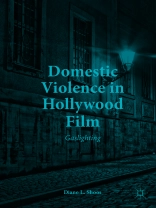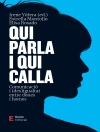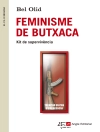This is the first book to critically examine Hollywood films that focus on male partner violence against women. These films include Gaslight, Sleeping with the Enemy, What’s Love Got to Do with It, Dolores Claiborne, Enough, and Safe Haven. Shaped by the contexts of postfeminism, domestic abuse post-awareness, and familiar genre conventions, these films engage in ideological “gaslighting” that reaffirms our preconceived ideas about men as abusers, women as victims, and the racial and class politics of domestic violence. While the films purport to condemn abuse and empower abused women, this study proposes that they tacitly reinforce the very attitudes that we believe we no longer tolerate. Shoos argues that films like these limit not only popular understanding but also social and institutional interventions.
Содержание
1.0 Chapter 1 Introduction: Representing Domestic Violence, Regalvanizing the Revolution.- 1.1 Domestic Violence in Hollywood Film.- 1.2 Post-awareness, Postfeminism, and Genre in Domestic Violence Films Reframing Domestic Violence Films.- 1.3 The Psychology of Domestic Violence Media Studies and Domestic Violence Preview of Chapters.- 2.0 Chapter 2 Gaslight, Gaslighting, and the Gothic Romance Film.- 2.1 Gaslight and the Gothic Romance.- 2.2 Domestic Violence in Gaslight.- 2.3 Portrait of a Batterer: Gaslighting and Verbal Abuse in Gaslight.- 2.4 The Legacy of Gaslight and the Gothic Romance Film.- 3.0 Chapter 3 Sleeping with the Enemy, Victim Empowerment, and the Thrill of Horror.- 3.1 The Gothic Romance and the Spectacle of Abuse in Sleeping.- 3.2 Post-Awareness and Postfeminism in Sleeping.- 3.3 Sleeping and the Thrill of Horror.- 3.4 Victim Empowerment and Female Violence in Sleeping.- 3.5 Sleeping: In Search of Female Agency.- 4.0 Chapter 4 What’s Love Got to Do with It: Race, Class, and the Performance Musical Biopic.- 4.1 Domestic Violence in What’s Love.- 4.2 Post-Awareness and Postfeminism in What’s Love.- 4.3 Performance, Race, and Class in What’s Love.- 4.4 What’s Love, Ambivalence, and Difference.- 5.0 Chapter 5 Dolores Claiborne, Motherhood, and the Maternal Melodrama.- 5.1 Genre in Dolores Claiborne.- 5.2 Domestic Violence, Class, and Motherhood in Dolores Claiborne.- 5.3 Female Bonding and Female Agency in Dolores Claiborne.- 6.0 Chapter 6 Enough, the Action Heroine, and the Limits of Violence.- 6.1 Abuse and Abusers in Enough.- 6.2 Post-awareness and Postfeminism in Enough.- 6.3 Genre, Ethnicity, and the Body in Enough.- 6.4 Enough, Motherhood and the Action Heroine.- 7.0 Chapter 7 Conclusion: Safe Haven and Ideological Gaslighting.- 7.1 Perpetuating Ideological Gaslighting: Patterns and Absences.- 7.2 Resisting Ideological Gaslighting.
Об авторе
Diane L. Shoos is Associate Professor of Visual Studies in the Humanities Department at Michigan Technological University, USA, where she teaches and publishes on film, feminism, and visual media. She was a member of the Board of Directors of the Barbara Kettle Gundlach Shelter for 18 years.












